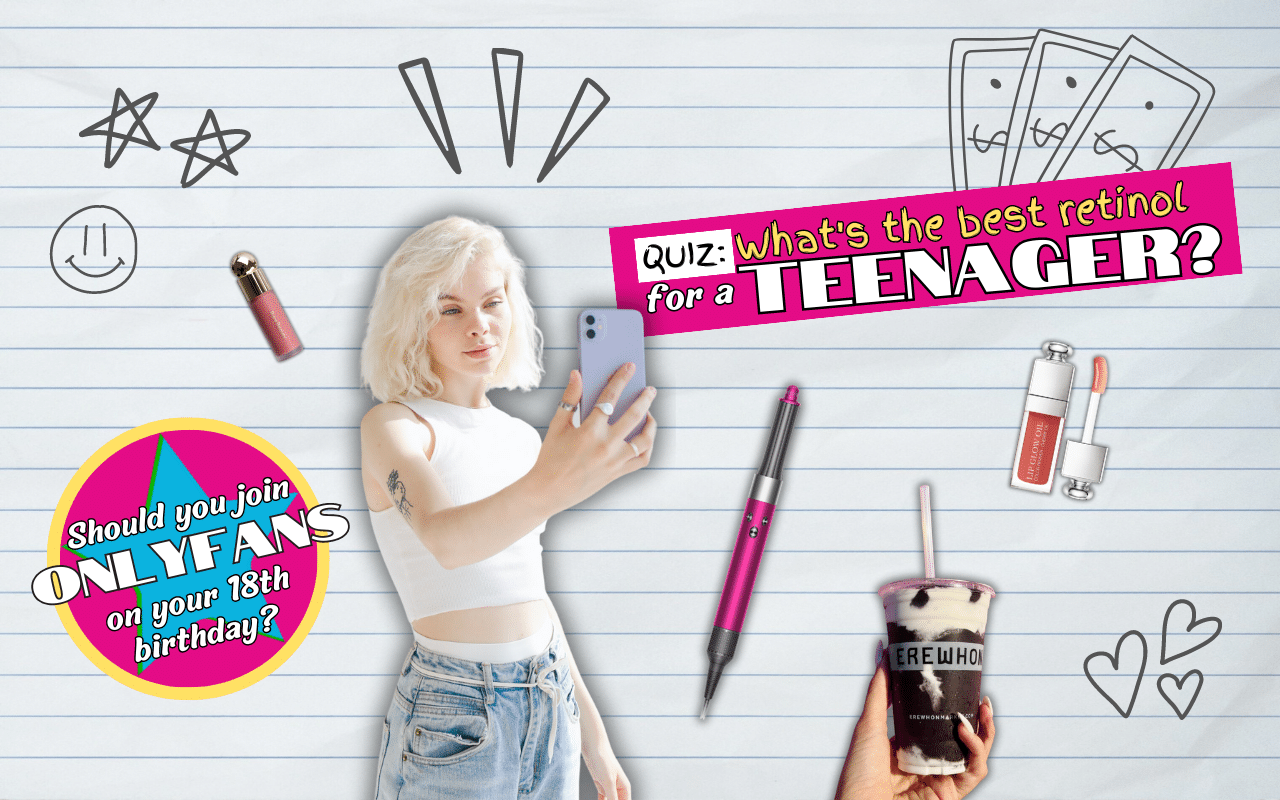
What Facebook is to Gen X, Instagram is to Millennials, and TikTok is to Gen Z. While each generation has its preferred social media platform, pre-teens, teens, and adults often interact online.
Though this cross-generational communication offers an opportunity for education and critical thought, it sometimes ends in disaster. Time and time again, we have seen debate and commentary lost in translation between generations.
As Crystal Andrews writes for Zee Feed, “Grown adults were never supposed to be regularly listening in on teens and young adults voicing their still-developing worldviews.” Not only does this limit the opportunity for young people to make mistakes without receiving backlash, but it also alters their self-perception.
And as digital spaces grow more challenging to moderate, the line between content catering to adults and teens is becoming increasingly blurred.
Where did the tween content go?
Gone are the days of pre-teens flooding their social media profiles with cringe selfies on Apple’s Photo Booth. Instead, we see young girls with extensive skincare regimens posting “Get Ready With Me” videos to go to school. Gen Z has taken the idea of 13 going on 30 to an entirely new level.
Video essayist, Shanspeare— real name Shaniya— explored this phenomenon, breaking down how social media has brought about “The End Of The Tween Era.”
“The desire to be grown isn’t what’s different. The mediums that said desire is explored are. And I don’t think you can blame young girls for the approach that they take,” they say. “In this digital age, I don’t believe there’s a ‘middle’ anymore. It’s either one extreme or another. Child or adult. And I think it is absolutely going to leave a mark.”
Shaniya’s observation is spot on. We have seen just about anything tween-focused suffer in recent years. Iconic tween shops like Justice and Claire’s have filed for bankruptcy. Not to mention the many old-school teen magazines—such as Elle Girl and CosmoGIRL!—that have ceased publication entirely. Only a few legacy teen magazines, like Seventeen, are still in print, but even they have had to limit these issues to specials.
While teen-specific media has declined, that doesn’t mean fewer pre-teens are consuming content. So, what is filling the gap?
@oldloserinbrooklyn The rise, fall and future of teen magazines, a conversation #thenewyorker #magazine #manrepeller #tavigevinson #teens
♬ Sex and the City (Main Theme) – TV Sounds Unlimited
It has been well-documented that Gen Z has pivoted away from TV, treating the likes of YouTube, Twitch, and TikTok as their primary form of entertainment. Spending hours a day online, there is no denying that social media plays a key role as teens transition into adulthood. While the impact varies based on the content and platforms a tween engages with, psychologist Ash King explains that young people use the internet as a means of self-discovery.
“The tween period of human development is a unique (and at times) challenging one, as it signals the point at which children begin to become interested in forging their own identity as separate from their family unit,” King says. “They might begin to be curious about who they are, what they value, and how they wish to be perceived by others. These questions can be explored through engaging with social media, where tween users might see other users represent the types of values, aesthetics, connections and influence that they admire and would wish to emulate.”
Kate, who is now 21, tells Centennial World about the types of content she consumed throughout her pre-teen years, with some of her favourite genres being gaming and anime.
By watching influencers like PewDiePie and iDubbbz, Kate unknowingly supported creators famous for their politically edgy comments and takes. And herein lies the problem. Many tweens lack the critical thinking skills and context to grasp the nuances of the content they consume. With most influencers catering to young adults, it becomes easier for tweens to internalise the (often problematic) values that creators preach.
“I should not have been watching those YouTubers at a young age,” Kate reflects. “I believe those content creators lead to a lot of awful things happening on platforms. Myself and many others were easily manipulated and fell into their videos because we didn’t know what was satire and what wasn’t.”
@centennialworld #idubbbz has apologised to #tanamongeau and the wider youtube ecosystem for his past “bigoted” content in a new video.
♬ original sound – centennialworld
Ash Jayy, also 21, had a similar story. As a trans man, influencers were aspirational, noting how he “used [male creators] to learn ‘how to be a man’ as a young trans boy.”
Given the rise of queer influencers and representation, social media has become a powerful tool for tweens and teens exploring their gender and sexual identity— particularly when they have limited opportunities in the real world. While anonymity in the digital space can be dangerous, it also provides a safe way for these young people to connect with their peers, helping mitigate feelings of loneliness and social isolation. But with limited content online catering specifically to this demographic, pre-teens remain at risk.
Ash, for instance, admits that he adopted misogynistic values later in life because of the influencers he watched during his tween years.
“The content I was watching was definitely targeted at young adults,” he tells Centennial World. “With hindsight (and a lot of therapy), I see now that so much of what I consumed at a really young age contributed to bad mental health and body image issues, and so much of the content contributed to me building disordered eating habits because especially with fitness channels, so many ‘quick tips’ were actually incredibly dangerous.”
That is not to say that all content on social media is detrimental to tweens. But instead, as adults and children become increasingly interconnected in online spaces, it shapes how young people perform age.
From ‘preventative’ botox and plastic surgery to anti-ageing skincare routines, the idea that youth triumphs over old age is pervasive. Yet, as social media democratises content, this demographic is grappling with a fear of getting old while simultaneously wanting to behave like adults. And TikTok’s never-ending stream of videos makes the platform the perfect breeding ground for this mentality.
Young girls are flooding the FYP with hauls sharing their favourite anti-wrinkle products and skincare smoothies. In years past, skincare for tweens prioritised getting rid of acne and pimples. But it seems that the industry has shifted, with teenagers’ routines looking eerily similar to those of adults as they focus on preventing fine lines and any signs of ageing.
“I feel like I’ve noticed a shift that younger people are suddenly worrying about anti-ageing,” commentary creator Nicole Rafiee shares in a recent video. “It used to be more about older people worrying about how to reverse ageing… [but] I think our transition into a heavy skincare focus in the beauty world made anti-ageing much more mainstream to younger people.”
Only recently did 14-year-old creator, Carson Bradley, go viral on TikTok for sharing how she “slows down the ageing process.” Her video has since amassed over 1.5 million views, leaving many users in the comment section concerned that someone as young as fourteen would be worried about ageing.
@carsonbradleyxoxox #aging #antiaging #antiagingskincare #imobsessedwithmakeup#ilovemakeup #viral #makeuptut #carsonbradley #carsonbradleyxoxo #makeup #SmallMakeUpArtist #makeupart #makeup #beauty #makeupartist #fashion #like #style #skincare #makeuplover #fyp #foryou #girly #makeupaddict #cute #hair #makeuplooks
♬ original sound – Carson Bradley
The skincare and beauty products considered trendy on TikTok show just how far tweendom has fallen.
Carson claims that retinol is an important step in her anti-ageing routine— a skincare ingredient typically introduced in one’s late 20s or later. With retinol being a favourite among TikTok users, it becomes clear that many popular beauty products are originally marketed towards adults, with some even sitting in the luxury category.
Where pre-teens of years past loved EOS lip balms and Maybelline’s Babylips, today’s demographic is opting for the Dior Lip oil and Laneige lip balm. When we consider the price point of these products, they are not practical for pre-teens. These items are not something you can purchase with pocket money— even many people with a full-time income would be hesitant to fork out $40 on a lip oil.
@michelleskidelsky Replying to @hannahmlemon michelle skidelsky, phD, presenting the results of my cruical study
♬ original sound – michelle
As influencers continue to promote these products, luxury items are no longer a way to indulge yourself, but rather, an expectation and an ideal. Tweens are susceptible to this form of “materialism porn,” King notes, which can ultimately play a significant role in shaping who they are and who they become.
“One thing that we all can absorb from online content is a value system of what sorts of things should we consider meaningful/ important and what sorts of things will earn us more popularity/respect/influence with others,” King explains. “So, it’s complicated. But, in my opinion, I do think that consuming content at an impressionable age can be detrimental when the values that the content creators are representing are highly materialistic or objectifying (again, ‘materialism porn’ or ‘the most important thing to be in life is skinny & attractive’).”
@notoliviadejarnett gooood morning 😍
♬ Everybody Love Somebody x So this is love – 🐯
All that to say, it is overly simplistic to assume that social media content only affects pre-teen purchasing behaviour.
Teenagers, often young girls, feel they must present themselves in a way to appeal to the patriarchy and feed into the male gaze— something that many women have to unlearn later in life. In the most extreme cases, we have seen the likes of Danielle Bregoli (a.k.a Bhad Bhabie) start an OnlyFans account just days after she turned 18, the minimum age for joining the platform.
Meanwhile, other young girls draw inspiration from feminist influencers who may post thirst traps and bikini photos in an attempt to reclaim their sexuality and promiscuity. Through this, women can separate themselves from being the objects of male desire. However, as Shaniya observes, it’s risky when young people emulate this behaviour.
“The way I see it, the sexual liberation movement is a way for women— adult women— to gain back their agency— to form a foundation of consent wherein their sexuality and body [are] shown and appreciated on their own terms. The problem is, young girls, primarily minors, are trying to emulate this idea of liberation without understanding how it impacts them,” they explain in their video. “I think it’s our duty to condemn people, especially adults, who sexualise minors against their will or even in general— because it’s wrong. And at the same time, we can also ask minors to be safe on the internet, and protect themselves as best as they can.”
While social media has great potential to guide pre-teens through a confusing and often tumultuous time, we have seen this demographic rush to grow up. But just because tween content has fallen through the cracks online, doesn’t mean that algorithms and social media platforms should inherently reward pre-teens for emulating their favourite influencers.
Let the tweens tween.


